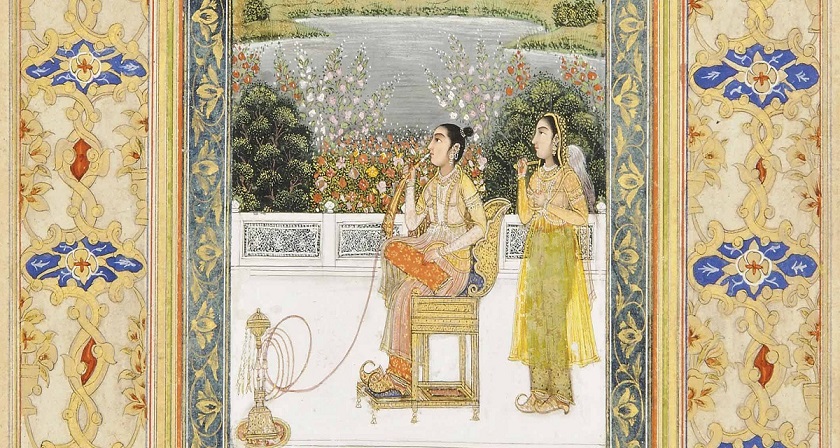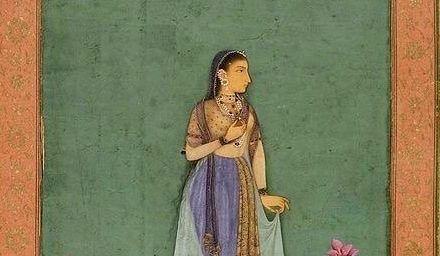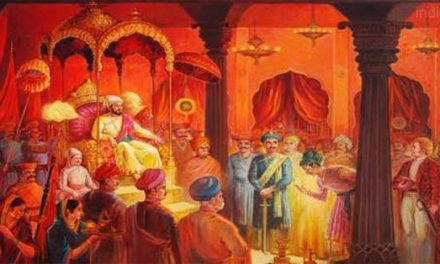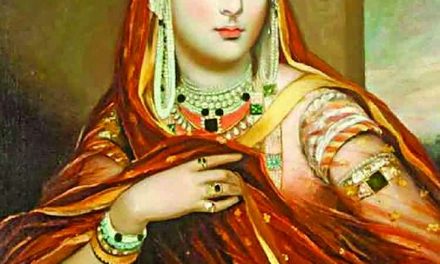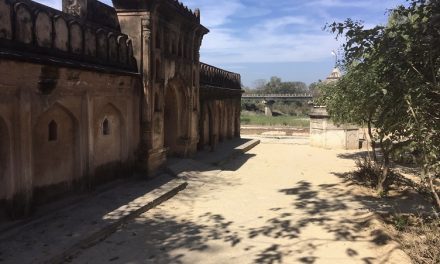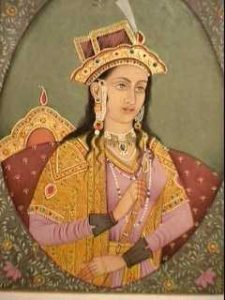
Gulbadan Banu Begum Image source: Google
“If we were to judge by history books, it would be easy to think that men were pretty much the only people who mattered in history – or at least, the ones worth remembering. That isn’t true, of course, but that’s the story we’re accustomed to hearing about the past: one where the presence of men is taken as a given, and the presence of women is exceptional.” – Time, March 8th, 2016.
Even though half of humanity comprises of women, their contributions to history are constantly ignored. A lion’s share of the history of the Indian subcontinent was written by court historians. This history has a masculine tone in the sense that they were written by men highlighting deeds done by men.
This comes as no surprise since women were always thought to be powerless and hidden in the shadows, only abiding by what their ruling male figure wanted them to do. This rings true for some parts in time but for others, women were educated, independent and flourishing on their own.
If we probe into history, it is found that even though the overall position of women during Mughal reign was low, girls received their education at home. Since the Mughal emperors were cultured and educated, they were aware of the importance of providing education to their children, including their daughters.
Special teaching arrangements were made for the princesses of the royal Mughal household. Some of the princesses turned out to be distinguished scholars with outstanding expertise in art and culture, as well as in war and diplomacy. Among the prominent female Mughal royalties, Gulabadan Begum upholds a unique status. Conceivably, she is the sole female historian whose work is the only lasting history written by a woman in the Mughal period.
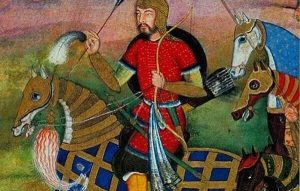
Humayan the son of Mughal Emperor Babur and the father of Mughal Emperor Akbar. Image Source: Google
Born in 1523 in Afghanistan, Gulbadan Begum was the daughter of the first Mughal Emperor Babur and his wife, Dildar Begum. Being Humayun’s sister and Akbar’s aunt, she was closely related to three of the foremost Mughal emperors. Therefore, when Akbar requested his aunt to reminisce about the early days of the Mughal era to be added to his biography, “Akbar-nama”, she was probably one of the most suited people to write with more insight than most.
At the age of six, Gulabadan Begum came to live in India after Babur succeeded in establishing his reign there. Later she went to live in Kabul, the capital of Afghanistan, when Humayun took refuge there after his defeat in 1540.
When Humayun regained his kingdom, Gulbadan Begum did not return to India. She stayed back in Kabul until Akbar brought her back in 1556. She lived there for the rest of her life, with the exception of seven years in between when she carried out the strenuous journey of a pilgrimage.
It was customary for the monarchs to appoint writers to put in writing, the glorious deeds of their reigns. For Emperor Akbar, it was “Akbar-nama” and Persian scholar, Abul Fazl, was given the responsibility of its documentation. Since Akbar had a great liking for his aunt, and her narrative skills as well, he enjoining her to write about the life of his father, Humayun, in order to enrich the biography with more factual depictions.
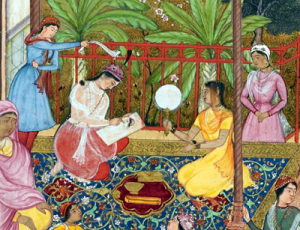
Humayan Nama was written by Princess Gulbadan Begum. Image Source: Google
Gulbadan Begum was known to be a knowledgeable, sophisticated and pious individual. She was fluent in Persian and Turkish. She was greatly fond of reading which, most likely, developed her unique style of storytelling. Recollecting the memory of her bygone days, she wrote “Ahval-I Humayun”, also known as “Humayun-nama”.
In the book, she writes about the day to day events of life inside the royal palace, which was not possible to be written by court historians. Unlike others, she highlights the societal and domestic side of the Mughal times rather than war and politics.
The first segment of the recollection depicts Humayun’s regime and the agonizing trials he had to endure after his defeat. The following part portrays the innermost picture of Mughal harem, along with a vivid description of Mughal women living in the premises.
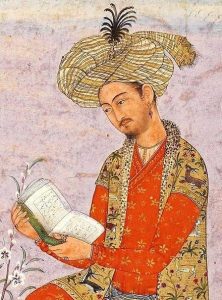
Zahir-ud-din Muhammad Babur. Image Source: Google
Gulbadan Begum could manage to provide a very modest reminiscence of her father Babur, as she was only eight when he passed away. Even so, she added some anecdotes that she heard about him in the palace.
She gave a very comprehensive description of her brother’s rule. She writes in great detail about feasts and festivals, marriage ceremonies and celebrations for victory. She talks about how Humayun would have the entire city decked up and hand out gifts to all the people whenever he came back victorious from a war.
The recollection also imparts on how royal women had to cope with uncertainty and itinerant life with the loss and regaining of kingdom at the beginning of the Mughal era. Even though they were of blue blood, they had to go through hardship and losses of loved ones since war, rivalry and greed for power consumed the lives of their fathers, sons, brothers and husbands.
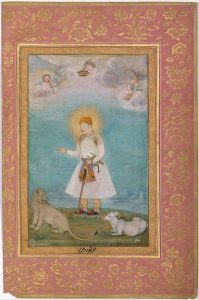
Painting by Govardhan. Image Source: Google
The profound account gives an insight on the independence and freedom enjoyed by women of Mughal aristocracy. They took part in social events, played polo, rode horses, went hunting and some even joined their husbands in war. The older women were looked up to for their experience and knowledge and their advice was taken with high regards.
Women also had a say in their marriages; we learn this when Gulbadan talks about how Hamida Bano, Humayun’s wife, refused to marry him because of his old age. She described Hamida as a sweet yet abrupt woman, someone with her own views of the world. Hamida was later persuaded by women in the royal family to marry Humayun, although not until after a long period of time.
Unlike other writers, Gulbadan used simple Persian and was straight to the point, much like how her father wrote his memoir, Babur-nama. She made a great effort to shed off all the aggrandizements and present a more authentic and diverse picture of Mughal aristocracy. She was against war and bloodshed and, therefore, merely focused on the social and cultural aspects which brought out a delicate image of the so-called austere Mughal rulers.
“The memoirs are written in simple language and events narrated concisely, shedding light on aspects of the Mughal family which are not mentioned in traditional history. Her memoirs expressed a feminist version of the history of her time, being against war and politics but favourable to society and culture.” – Dawn, Sunday Magazine, March 27th, 2016.
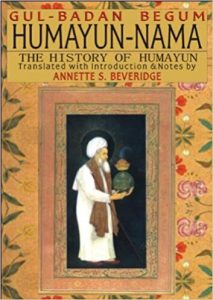
Image Source: Google
Unfortunately, the narrative was lost for centuries. It was formerly collected by an English collector, Colonel G. W. Hamilton. It came into being a possession of the British library in 1868 when he died and his wife sold some old Indian manuscripts from her husband’s collection. However, it remained unnoticed for years. In 1901, Annette Susannah Beveridge, a British Orientalist, commissioned herself to translate the recollection. Regrettably, the document was found in tatters.
Several pages were believed to be missing as the memoir ended unexpectedly without any details of Humayun’s accidental death. Contrasting to the well-preserved historical documents of Mughal periods, some believe that the narrative of Gulbadan Begum was not given much importance to be conserved. Even Emperor Akbar did not involve his aunt to document history.
He only asked her to jot down her memory which would eventually be added to his life story. (It was also assumed that she wrote several poems, none of which have ever been found.) Such negligence towards an authentic and heartfelt documentation is outright undesirable.
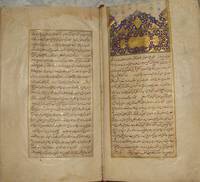
Image Source: Google
It clearly shows that in history women have been deliberately expunged; their success and brilliance was overshadowed by the supremacy of male-dominance. No matter what, the significance of women’s role in the course of history is irrefutable. As late Anant Sadashiv Altekar, a former historian, archaeologist, and numismatist from Maharashtra, India wrote:
“One of the best ways to understand the spirit of a civilization and to appreciate its excellences and realize its limitations is to study the history of the position and status of women in it.”
Reference: Beveridge, Annette Susannah (1898). Life and writings of GulbadanBegam (Lady Rosebody). Calcutta. Retrieved 14 December 2017
https://dailyasianage.com/news/210106/gulbadan-banu-begum—much-loved-yet-forgotten?fbclid=IwAR3nGVHmLSQUZz_O42soQ4LGU9tDWDZIvtsoNkoEwUJlgMqQRkdIfis_8lg

